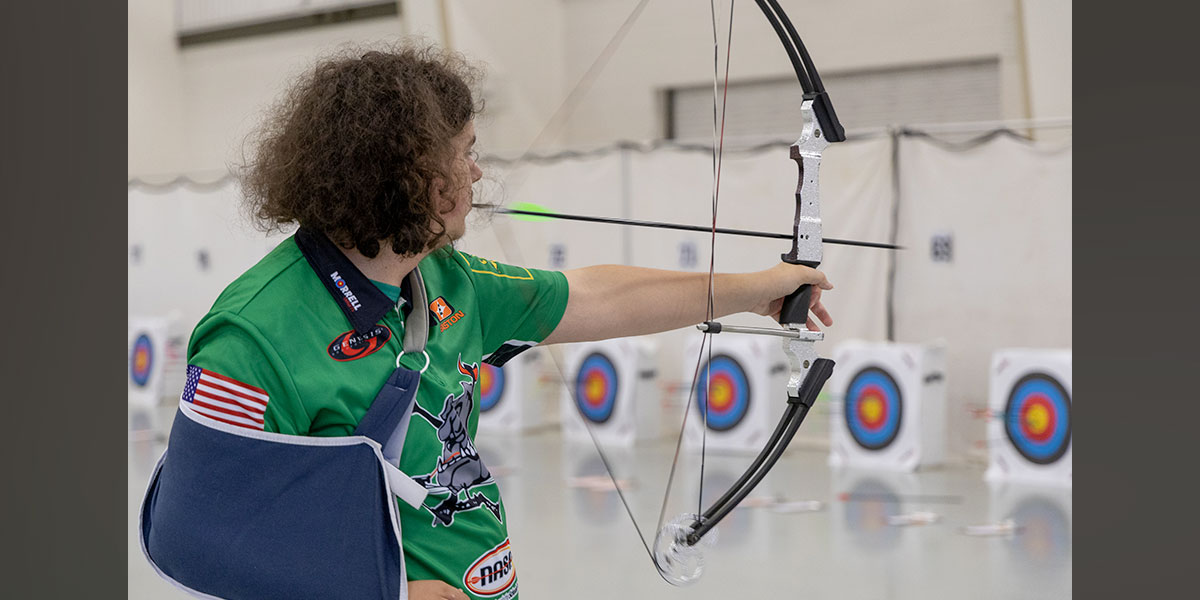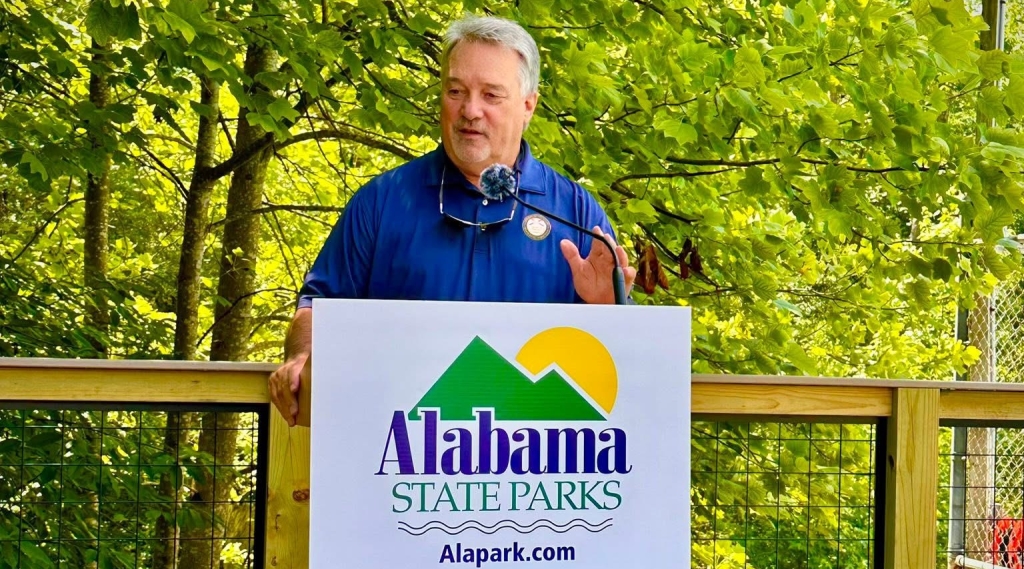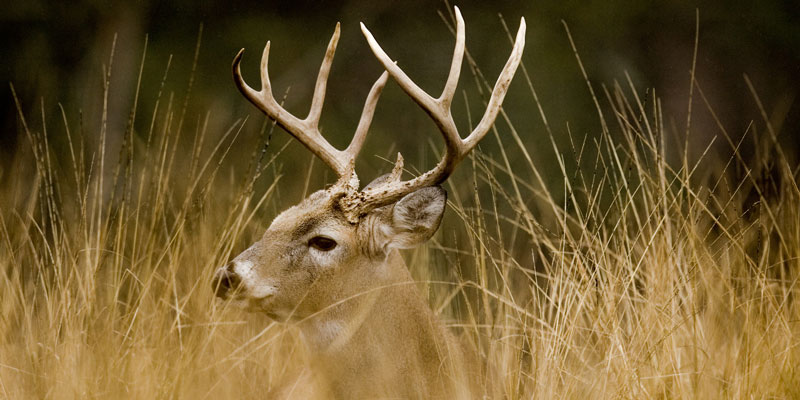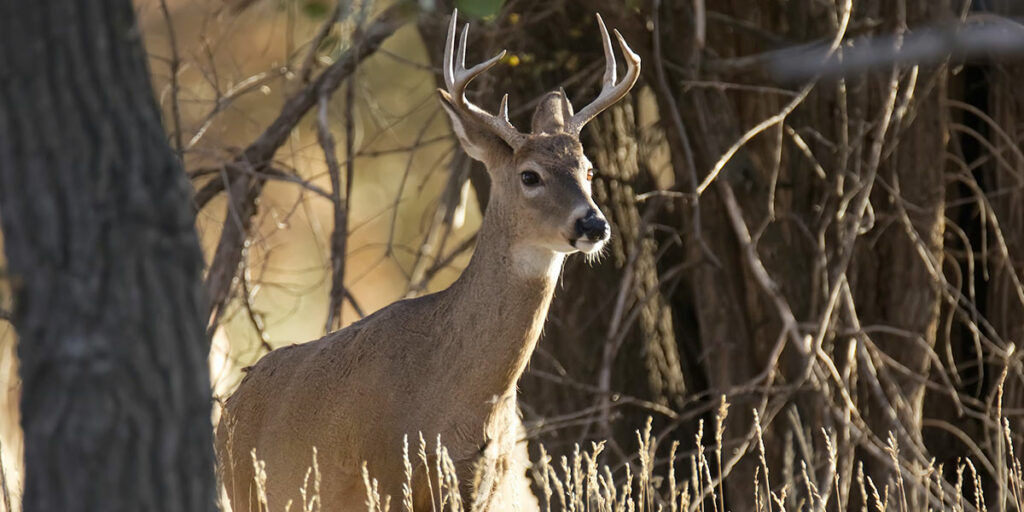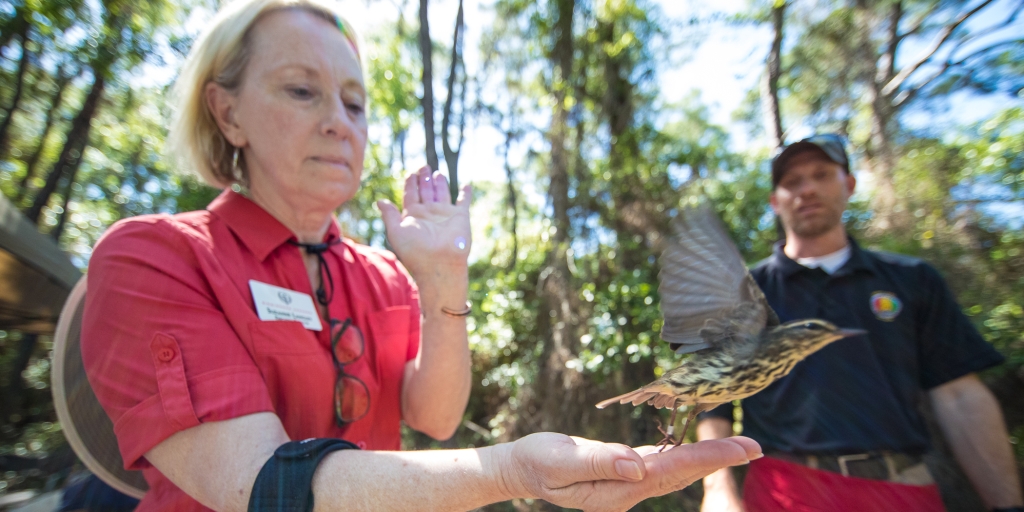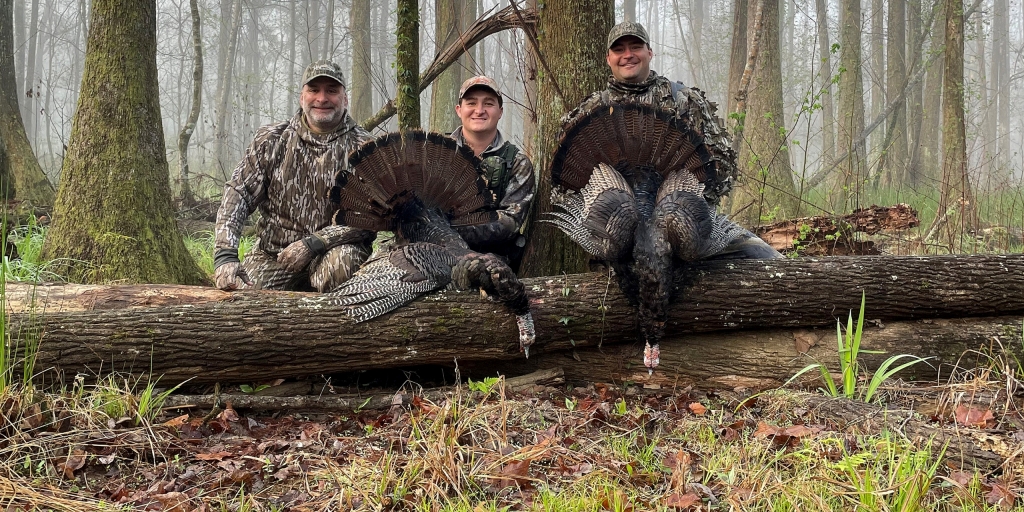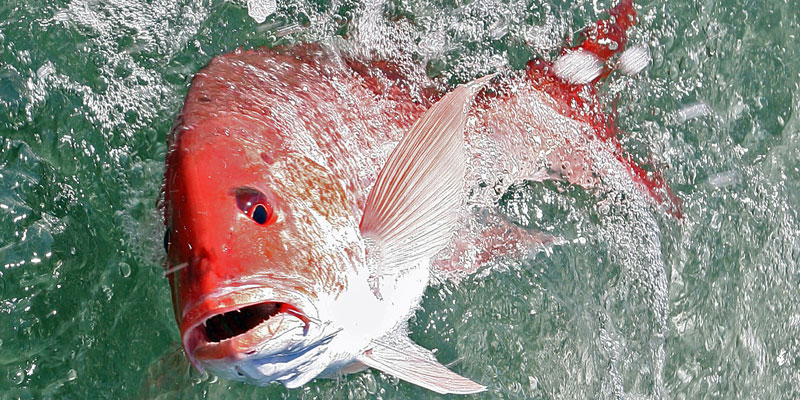What do you do if you break a bone in your elbow three weeks before the 20th anniversary National Archery in Schools Program’s (NASP) Alabama State Championship? If you’re Jake Cash of Ashville High, you adapt and overcome.
Chris Cash, Jake’s father, said his son tripped on a cable on the high school band’s trailer and landed on a battery used to power equipment. The tip of Jake’s elbow was broken, but, instead of surrendering his chances to compete, he and his coaches, Joshua Dollar and George Brightman, devised a way to work around the handicap.
“I started archery junior year so I knew I would have only two years to do it,” Jake said. “I had already put in so many hours practicing. So, three weeks before state, I decided I didn’t want to say I’m not doing it. One of my coaches told me it had been done before, and I was willing.”
Cash is a right-handed shooter with an injured right elbow, so the coaches rigged a leather strap connected to the string that he could grip with his teeth. Adjustments to the bow’s draw weight and a different aim point yielded positive results.
“There was certainly a learning curve to something unconventional like this. I grab the strap with my back molars and push my left arm out,” Cash said. “The aim was pretty close to what it was before. We had to adjust the bow’s tension to get me where I’m aiming on the target. I was aiming with my face more to the right than I usually would, so my arrows were hitting to the left. It took about halfway through the week for me to start shooting consistently. I had gotten the fundamentals of it and started fine-tuning some things.”
Spring Break occurred at an inconvenient time for Cash, who only had one day for the coaches to help him get acclimated to the new setup.
“I had to learn on my own because of Spring Break,” he said. “Then the week after Spring Break was state championship week. The first time people saw me doing it, they didn’t expect me to get back to where I was.”
Remarkably, Cash scored 285 out of a possible 300 during the competition, where archers shot rounds from 10 meters and 15 meters.
“It was a bit of a handicap, but I somehow pulled it off,” he said. “I shocked myself with it. I was not thinking it was going to be viable for me to shoot. Fifteen meters is a long shot. That is what I struggled with. At 10 meters, a little mistake won’t cost you much. But at 15, you make a little mistake and you’ve shot a seven or a six.
“Learning to avoid mistakes like that, like putting my mouth on the same spot on the tab with the same tooth, that was really the hard part of learning to shoot this way.”
The NASP not only teaches youth how to enjoy the recreational aspect of archery, but it also provides valuable life lessons.
“This really taught me the value of dedicating yourself to something,” Cash said. “If you stay dedicated, it will work out. This is my first year shooting, and I’ve already learned that practice will get you to places, especially when something like this happens a month before state. It’s practice and dedication.”
Jake’s 285 score put him in the top 10 percent of the 2,000 shooters.
“He ended up in 22nd place,” said Chris Cash. “I couldn’t ask for any more than that. I told him I was proud, and I was impressed.”
The Alabama Department of Conservation and Natural Resources’ (ADCNR) Wildlife and Freshwater Fisheries (WFF) Division hosts and conducts the NASP State Championship at the Cramton Bowl Multiplex in Montgomery. Michael Bloxom, WFF Regional Hunter Education Coordinator who coordinates the Alabama championship, said NASP originated in Kentucky.
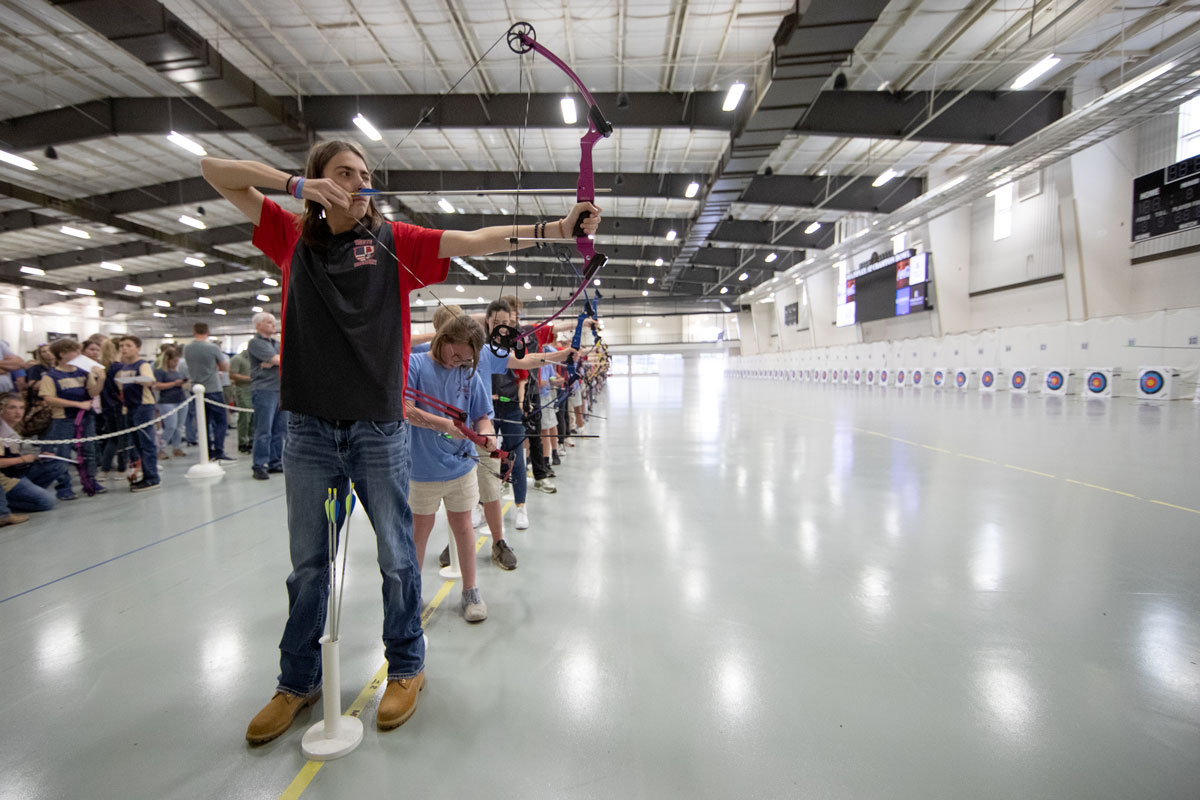
“The archery program was actually invented by a math teacher looking for a new way to teach math,” Bloxom said. “That was in 2001, and Alabama was one of the first states to come on board with the program nationally. This is our 20th year. It started with 200 archers and has now grown to 2,000 archers this year.”
Archers from the 4th through 12th grades compete in seven regional events throughout the state, and the top shooters qualify for the state championship.
“We had almost 7,000 kids shoot in one of those regional tournaments,” Bloxom said. “The scores are ranked, and invitations are sent out to about 2,000 shooters for the state championship. The program is in about 400 schools throughout the state, and we give out about $10,000 in scholarships at the state tournament. We also have the University of Montevallo here, giving scholarships to their collegiate archery team to the top shooters.”
Ray Metzler, who was a volunteer at this year’s competition, was the WFF Hunter Education Coordinator when Alabama joined NASP 20 years ago.
“We went from shooting in the pecan orchard at AWF (Alabama Wildlife Federation in Millbrook) with, I think, 224 shooters to now 2,000 shooters at the Cramton Bowl,” Metzler said. “We have 400 schools participating now. That’s good.”
NASP uses 10-ring targets similar to the Olympic-style scoring system with a 10 score for the bullseye and 1 point for the outer ring. Archers shoot a total of 30 arrows, 15 arrows from 10 meters and 15 arrows from 15 meters. Scores are recorded after each group of five arrows. A perfect score is 300 points, which has not yet been achieved in the 20 years of the Alabama championship.
“We’ve had several 297s and 298s, so it’s pretty elusive,” Bloxom said. “The archers can’t use sights. All the kids throughout the program have to use the same bows, same arrows and same format. That keeps it an even playing field between your smaller schools and your bigger schools with more resources. The team score is derived from the scores of the top 12 shooters with at least four of the opposite sex, so it keeps it a co-ed program.”
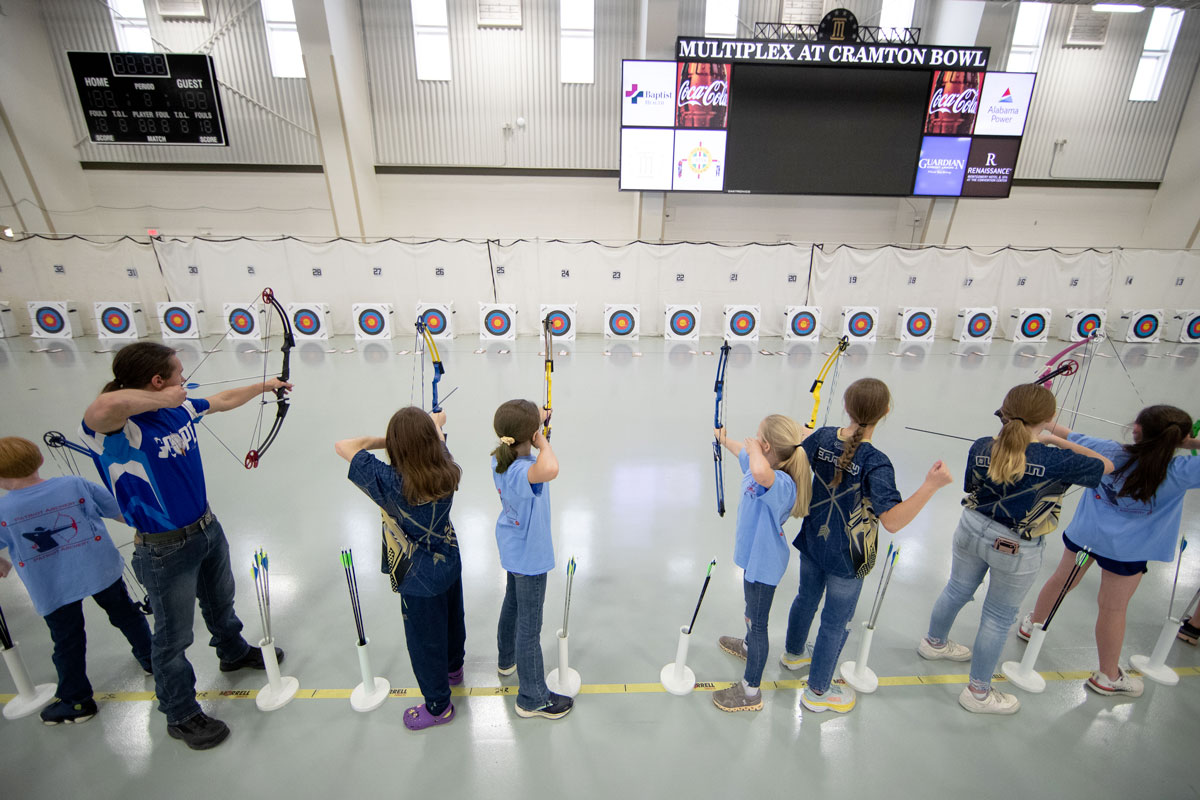
The top shooters and teams from Alabama will advance to the NASP National Championship in Louisville, Ky., in May. More than 10,000 archers from across the country will compete in that tournament.
Bloxom said the National Wild Turkey Federation Alabama Chapter, the Alabama Conservation Enforcement Officers Association and Alabama Wildlife Federation are among the biggest supporters of NASP in the state.
“They have funded all our scholarships, and now we can offer free admission to all the parents and spectators,” he said. “The cost for the individual kids hasn’t gone up in more than 10 years. They get a T-shirt and get to keep their arrows, so it’s something they get to take away other than the experience.”
Bloxom said school kids who might not be drawn to play sports like baseball, softball, football or basketball have the opportunity to participate in a team sport with NASP.
“It’s a great program because archery is a sport that kids of all shapes, sizes and abilities can do,” Bloxom said. “We have shooters who have special needs and disabilities, plus your kids that aren’t your typical athletes. They may not be able to compete in the traditional sports, but archery is one of those things some kids just have a natural ability for. Once they have a chance to try, they find out they like it. Then they get good at it, and it gives them the opportunity to take part in a team sport where they develop discipline and confidence that they might not otherwise get to experience.
“Here in Alabama, the Department (ADCNR) really supports the program. We do free teacher training. What we hope to do is create lifelong archers. We hope some of these kids will become bowhunters, competitive shooters or just shoot in their backyards. And every time they buy a bow or arrows, they will be helping wildlife conservation through the Pittman-Robertson Act. That’s one component of it, but it’s also teaching good skills, like discipline, responsibility and teamwork. The reason it’s a school program is it’s not just archery; we’re actually looking to improve academics as well.”
Speaking of academics, Bentley Joiner of Fayetteville School was named one of 10 NASP Academic Archer Equipment Winners for 2023. Joiner was selected from more than 34,000 nominees nationwide.
David Rainer is an award-winning writer who has covered Alabama’s great outdoors for 25 years. The former outdoors editor at the Mobile Press-Register, he writes for Outdoor Alabama, the website of the Alabama Department of Conservation and Natural Resources.




